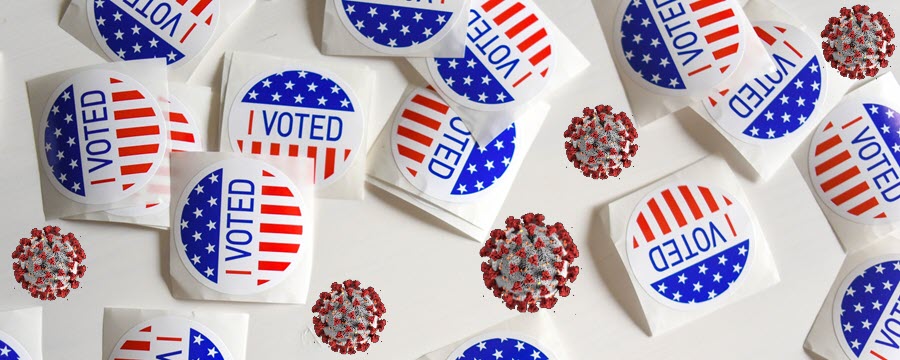
COVID-19 Safety Tips for Voting Sites on Election Day

On Tuesday, November 3, millions of Americans are expected to vote in the U.S. presidential election. This year, Election Day takes place amid the COVID-19 pandemic, which has led to more than 8 million cases and 200,000 deaths in the U.S.
Many voting centers across the country are bracing for high voter turnout on this Election Day. Earlier this year, the Centers for Disease Control and Prevention (CDC) updated its official considerations for election polling locations and voters to help prevent the spread of COVID-19.
Safe messaging begins before voters come to the polls. When voting centers and other organizations communicate with voters through means such as email, websites, and social media, be sure to emphasize messages that encourage behaviors to help prevent the spread of COVID-19. For instance, neither poll workers not voters should bring inessential guests to the polling location.
To reduce the risk of exposure to the coronavirus, voting centers should observe the following tips to ensure people can cast their ballots as safely as possible.
Tip 1: Organize the Space for Social Distancing
The CDC recommends that voting centers post signs in key areas to promote social distancing, mask-wearing, and other protective measures to help prevent the spread of germs.
Voting sites should create a one-way path for voter lines and foot-traffic with a single point of entry and a separate exit. Use floor tape, floor arrows, and other labels to mark 6-foot spacing areas to help voters maintain safe social distancing. Use barriers such as mobile plexiglass partitions to separate voting stations and workers at tables.
Tip 2: Clean and Disinfect Shared Objects
Provide hand sanitizer for voters as well as poll workers. This should be an alcohol-based product with at least 60 percent alcohol for use at each step in the voting process where voters interact with poll workers and after these use the voting equipment.
- Have sanitizer available where voters enter, using sanitizer hang tags to make it clearly visible.
- Use hygiene station supplies to wipe down voting stations after being used by each voter. This can include voting machines, tablets, keyboards, ballot activation cards, and other reusable items.
- Set up a drop-off spot for shared items such as common pens and laminate or plastic folders. Assign a worker to clean each one after voters have used them before putting them back into circulation.
Tip 3: Prepare for Line Control
Clearly mark the points of entry and exits to avoid bottlenecks. Avoid creating tightly-spaced queues in small indoor spaces. Use a plastic chain or barricade tape to identify voter waiting areas.
Use door marking or decals as well as signs to remind voters to maintain social distancing while in line. Workers should be as polite as possible when encouraging voters to be patient.
If the polling location is a school, library, or another facility actively used by other people, make sure that the voters can be kept separate. Designate separate entrances, exits, and restrooms for voters and poll workers, apart from the other facility users.
Tip 4: Communicate Pandemic Safety Policies
Promote protective measures inside the voting center with signs about requiring masks or approved face coverings.
Remember that masks can make it difficult for people who are hard-of-hearing to hear, lip-read, or understand what masked people are saying. When possible, provide clear face shields for the poll workers most likely to give voters verbal instructions.
In keeping consistent with local laws, make sure that signage and other messaging is accessible to voters with disabilities. Make sure that large print, braille, or auditory versions of informational signs and other instructions are available.
Tip 5: Plan for Signs of Symptoms
According to the CDC’s official guidelines, workers should learn the symptoms of COVID-19 and stay home if they have them or have been exposed to others who do. They should also learn when it’s safe to return to work.
- Use signage to discourage voters with symptoms from entering the voting center and identify alternatives, such as a designated curbside voting location where possible.
- Place plexiglass sneeze guard barriers between workers and voters, as well as between workers who must share a space.
- Designate an isolation area in case a worker becomes ill or symptomatic, or has been exposed to an asymptomatic voter.
- Finally, voting is a right for all American citizens. It is important for voting centers to adopt safety measures to make sure voters can exercise that right while reducing potential risks to their health.

